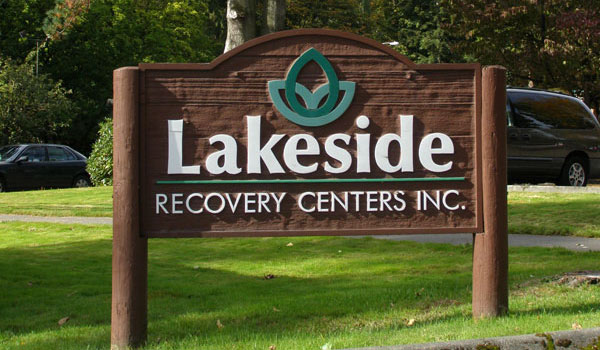There’s something about clouds. We use them to describe our feelings. If we’re super happy, we’re on Cloud Nine. If we’re depressed, a dark cloud hangs over us. If we’re facing a crisis, storm clouds loom ahead.
Clouds figure into recovery, too. Especially early recovery, when you’re newly sprung from rehab. You feel great. On top of the world. You expect to never relapse. You feel forever released from chemical dependency. You’ve got this.
You’ve also got Pink Cloud Syndrome. It’s an intensity after detox when you feel like a conqueror, floating on marshmallow clouds of joy. But you need to realize that clouds eventually dissipate, and chances are—you’ll soon hurtle back to earth.
Though it seems you’ll feel this fabulous forever, you won’t. And you need a solid strategy when the reality of recovery threatens to uproot all the hard work you’ve put in.
Signs of Pink Cloud Syndrome
Feeling good about recovery isn’t a bad thing. In fact, it’s a sign your recovery is working. Chemical dependency often numbs emotions, so getting sober also means getting back your feelings. When you’ve lived in a depressed state, a sense of normalcy can feel like a high. It takes a while to sort out and understand what “real life” feels like.
So it’s okay to feel glad. It’s an emotion that can effectively motivate and improve your routines and relationships. Happiness boosts self-esteem. It can restore your daily gratitude and faith in humanity. Just don’t let that happiness swing from one unrealistic lifestyle (dependency) to another (euphoria).
People with advanced Pink Cloud Syndrome often exhibit these characteristics:
- Arrogance
- Denial
- Euphoria
- Impulsiveness
- Independence
- Overconfidence
- Unrealistic expectations
- Unrealistic commitments
Post-detox folks laughing on pink clouds may stray to thinking that they don’t need help anymore. They might quit continuing care or recovery groups; they may forego 12-Step meetings. Why? Because they begin to think these essential activities aren’t necessary when they feel so good. What they don’t realize is that these omissions crumble their ability to manage pending cravings, triggers, temptations, and wrong choices. Before long, they crash: risking a relapse and souring over their recovery program’s effectiveness.
According to Andrea King, a professor in the department of psychiatry and director of the Clinical Addictions Research Laboratory at the University of Chicago, the pink cloud can be risky and may raise unrealistic expectations. “They [recovering individuals] really need to take it one day at a time,” King said. “Pink cloud is thought of as, ‘It’s pink, it’s a cloud and everything is great and I’m cured.’ And that’s often not the way it goes for most people.”
Fortunately, the Pink Cloud Syndrome story doesn’t need to end badly. Before the cloud appears—or after it shows up—you can create a plan to manage your unexpected joy and the reality check that’s waiting in the wings.
Ten Steps for Real Life
If you want to intercept Pink Cloud Syndrome and prevent it from hurting your recovery, try this plan for managing “real life” after detox.
- Appreciate balance. Emotionally and experientially, chemically dependent people dwell in the edges of life. Learn how to move toward the middle, not needing extreme emotions and circumstances to feel “okay.”
- Avoid tempting locations. Don’t go to or even drive by locations where you abused alcohol or drugs, etc. Find new, sober places for meals and entertainment.
- Change old routines. Alter your daily routine and schedule so they don’t replicate how you behaved while using. This helps to eliminate an “automatic” desire to relapse.
- Cultivate a healthy lifestyle. Exercise and eat healthy food. Honor your physical body the way it deserves to be honored.
- Escape the “just a little bit” rationale. When you’re in the pink cloud, you might think you can handle anything, even just “a bit” of alcohol or one pill. Even a tiny amount can send you into relapse, though you feel like you’re in control.
- Learn from post-cloud folks. Talk to others who sat on the pink cloud. What was their experience? What is their advice? Did they visit the pink cloud more than once? What happened? What should you learn to avoid?
- Minimize your triggers. Conflict, eating poorly, physical and emotional pain, sleeplessness, worry, and other negative events and emotions can sabotage sobriety. Develop ways to head off or diminish your triggers to use. Work your 12-Step program.
- Reconsider your friends. You can’t hang out with friends who still use. They will tempt you. Stretch yourself and make new friends with sober people, or increase your time with sober family members and existing sober friends.
- Stick with your recovery group. Spending time with people going through what you’re going through will boost your sense of acceptance, belonging, and encouragement. These colleagues will help you “keep on keeping on.”
Get Your Head Out of the Clouds
Ultimately, recovery is an ongoing process. There is no once-and-for-all solution. It’s step-by-step, day by day. Still, life on planet earth can be enjoyable and satisfying if you follow your program. You don’t need to keep your head in the clouds.
To learn more about starting the recovery process or jumping back in after a post-pink-cloud relapse, call 800.231.4030 now or email confidentially: help@lakesidemilam.com.
————————————————–
Resources:
“Floating on Cloud Pink” by Sara Amata. The Chicago Tribune, April 7, 2014. https://www.chicagotribune.com/redeye/redeye-addiction-what-is-pink-cloud-20150408-story.html.






